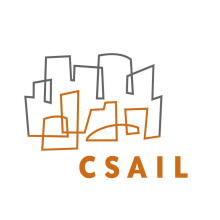
Robohub.org
Teaching robots to teach other robots
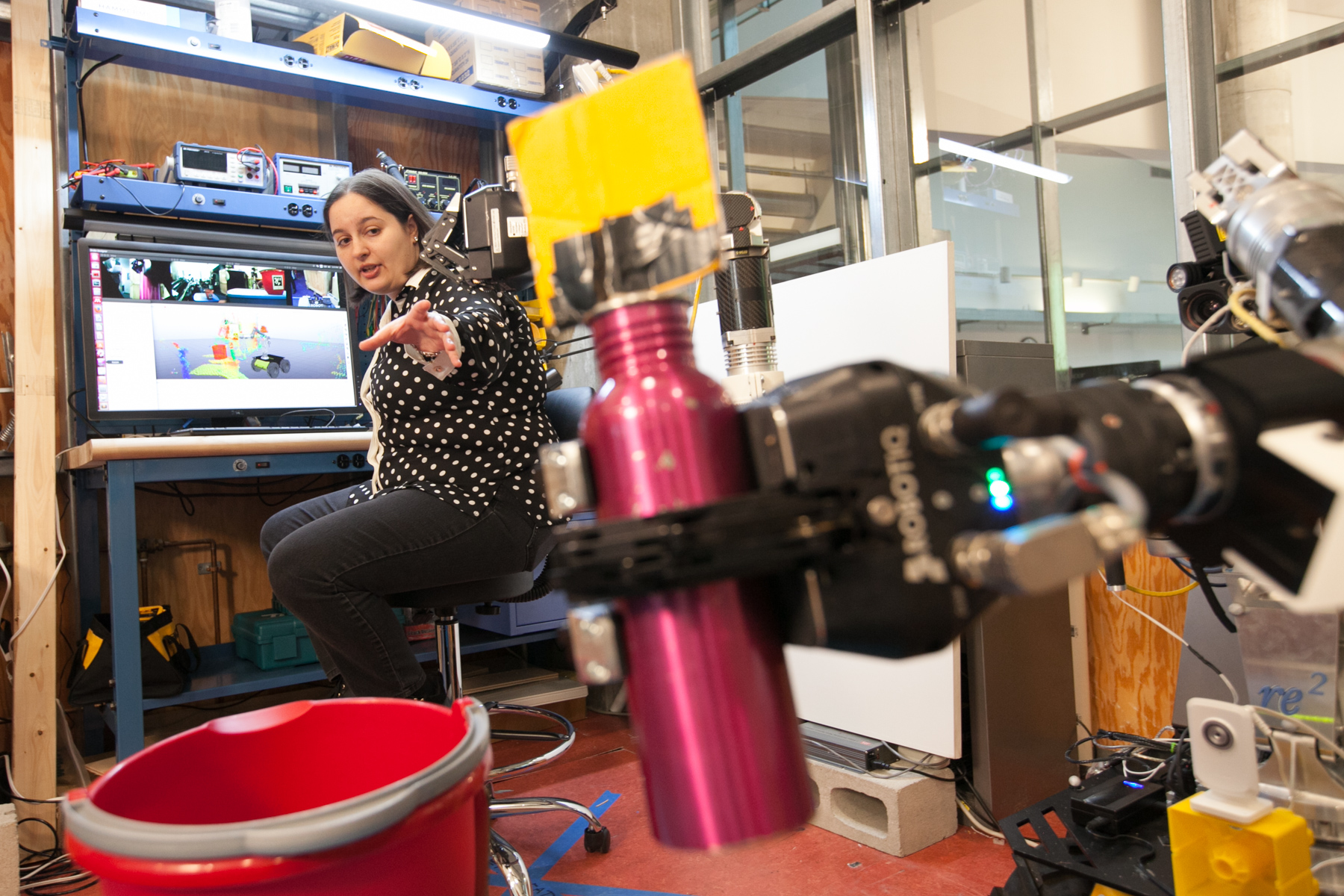
D’Arpino Perez discusses her work teaching Optimus to pick up a bottle. Image: Jason Dorfman, MIT CSAIL
Most robots are programmed using one of two methods: learning from demonstration, in which they watch a task being done and then replicate it, or via motion-planning techniques like optimization or sampling, which require a programmer to explicitly specify a task’s goals and constraints.
Both methods have drawbacks. Robots that learn from demonstration can’t easily transfer one skill they’ve learned to another situation and remain accurate. On the other hand, motion planning systems that use sampling or optimization can adapt to these changes, but are time-consuming, since they usually have to be hand-coded by expert programmers.
Researchers from MIT’s Computer Science and Artificial Intelligence Laboratory (CSAIL) have recently developed a system that aims to bridge the two techniques: C-LEARN, which allows non-coders to teach robots a wider range of tasks simply by providing some information about how objects are typically manipulated and then showing the robot a single demo of the task. Importantly, this enables users to teach robots skills that can be automatically transferred to other robots with different “kinematics” (ways of moving) – a key time- and cost-saving measure for companies that want a range of robots to perform similar actions.
“By combining the intuitiveness of learning from demonstration with the precision of motion-planning algorithms, this approach can help robots do new types of tasks that they haven’t been able to learn before, like multi-step assembly using both of their arms,” says Claudia Pérez-D’Arpino, a PhD student who wrote a paper on C-LEARN with MIT professor Julie Shah.
The team tested the system on Optimus, a new two-armed robot designed for bomb disposal that they programmed to perform tasks like opening doors, transporting objects and extracting objects from containers.
(The robot is made of components from multiple manufacturers, including a manipulation system by RE2, a Husky unmanned ground vehicle by Clearpath, 3-finger grippers by Robotiq and the multisense sensor from Carnegie Robotics that is used in the Atlas robot.)
In simulations they showed that Optimus’ learned skills could be seamlessly transferred to Atlas, CSAIL’s six-foot-tall, 400-pound humanoid robot.
The paper was recently accepted to the IEEE International Conference on Robotics and Automation (ICRA), which takes place May 29-June 3 in Singapore.
How it works
With C-LEARN the user first gives the robot a knowledge base of information on how to reach and grasp different objects that have different constraints. (The C in C-LEARN stands for “constraints.”) The operator then uses a 3D interface to show the robot a single demonstration of the specific task, which is represented by a sequence of relevant moments known as “keyframes.” By matching these keyframes with the knowledge base, the robot can automatically suggest motion plans for the operator to approve or edit as needed.
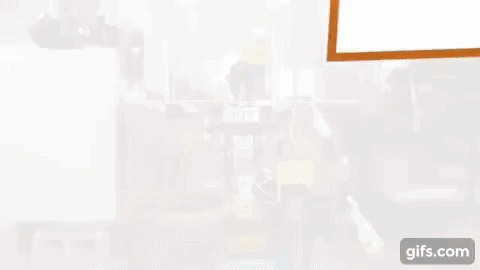
“This approach is actually very similar to how humans learn in terms of seeing how something’s done and connecting it to what we already know about the world,” says Pérez-D’Arpino. “We can’t magically learn from a single demonstration, so we take new information and match it to previous knowledge about our environment.”
One challenge was that existing constraints that could be learned from demonstrations weren’t accurate enough to enable robots to precisely manipulate objects. To overcome that, the researchers developed constraints inspired by computer-aided design (CAD) programs that can tell the robot if its hands should be parallel or perpendicular to the objects it is interacting with.
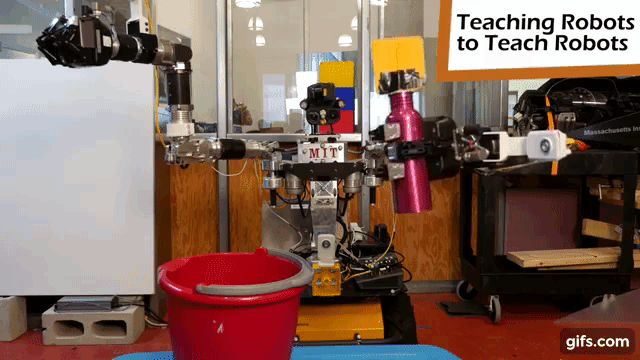
The team also showed that the robot performed significantly better in collaboration with humans. While the robot successfully executed tasks 87.5 percent of the time on its own, it did so 100 percent of the time when it had a operator that could correct minor sensory inaccuracies.
“Having a knowledge base is fairly common, but what’s not common is integrating it with learning from demonstration,” says Dmitry Berenson, an assistant professor of computer science at the University of Michigan who was not involved in the research. “That’s very helpful, because if you are dealing with the same objects over and over again, you don’t want to then have to start from scratch to teach the robot every new task.”
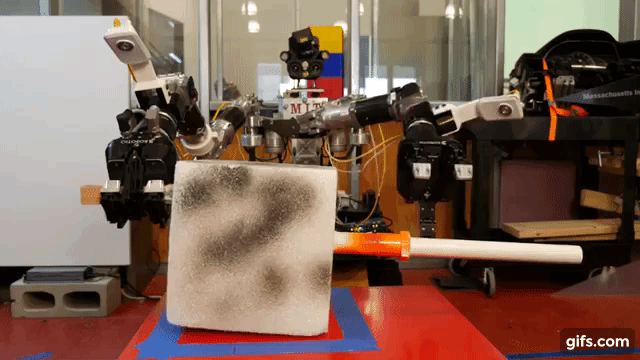
The system is part of a larger wave of research focused on making LfD approaches more adaptive. If you’re a robot that has learned to take an object out of a tube from a demonstration, you might not be able to do it if there’s an obstacle in the way that requires you to move your arm differently. However, C-LEARN can do this, because it does not learn one specific way to perform the action.
“It’s good for the field that we’re moving away from directly imitating motion, towards actually trying to infer the principles behind the motion,” says Berenson. “By using these learned constraints in a motion planner, we can make systems that are far more flexible than those which just try to mimic what’s being demonstrated”
Shah says that advanced LfD methods could prove important in time-sensitive scenarios like bomb disposal and disaster response, where robots are currently tele-operated at the level of individual joint movements.
“Something as simple as picking up a box could take 20-30 minutes, which is significant for an emergency situation,” says Pérez-D’Arpino.
C-LEARN can’t yet handle certain advanced tasks, like avoiding collisions or planning for different step sequences for a given task. But the team is hopeful that incorporating more insights from human learning will give robots an even wider range of physical capabilities.
“Traditional programming of robots in real-world scenarios is difficult, tedious and requires a lot of domain knowledge,” says Shah. “It would be much more effective if we could train them more like how we train people: by giving them some basic knowledge and a single demonstration. This is an exciting step towards teaching robots to perform complex multi-arm and multi-step tasks necessary for assembly manufacturing and ship or aircraft maintenance.”
Click here to access the full paper.
tags: Actuation, Algorithm AI-Cognition, Algorithm Controls, Annoincement, c-Research-Innovation, Manipulation, MIT, Prototype, Research, robot, software
